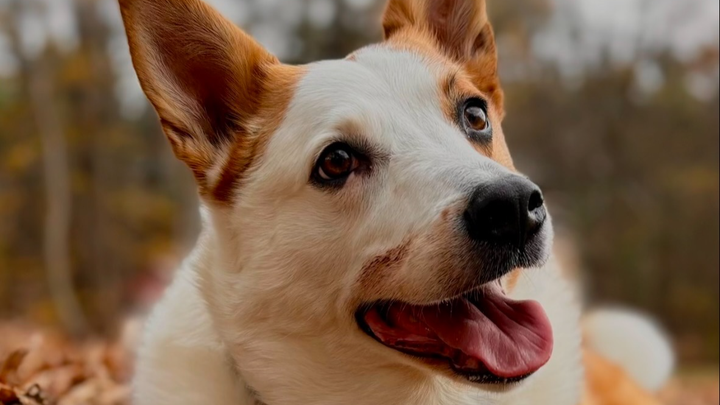
Get Izzy Back to Chasing Squirrels
Donation protected
Hi all! Many of you know, my sweet, outgoing dog named Izzy has torn her ACL. She started limping after chasing a squirrel and has been unable to put much weight on her back left leg since. A trip to the vet for x-rays and a teeth cleaning they included as she was sedated anyway ($1200 dollars later) confirmed that she has completely torn her ACL and will need surgery and medications to treat the injury and to get her back to her squirrel chasing, fetch loving, self.
She will be going to one of the top animal medical centers in the area known as the MSPCA ANGELL MEMORIAL ANIMAL MEDICAL CENTER. If you are able to donate towards the surgery, I would be forever grateful and will provide medical receipts along with updates and pictures of Izzy during this process. I have received an estimated cost of approximately (the low end) of $6,300 , high end $7,200 bases on what they find. I have attached the quote in the updates. If you choose to donate another way please let me know and it can be arranged.
The odds of a dog to have this same injury to happen in her other knee are 40-60%. I am hopeful after the vet looked at her x rays he did not see much wrong with her right side at all, we will not have to do this ever again. I have taken the time to find research and provide it below on what her surgery will entail.
What is TPLO surgery?
TPLO is the abbreviation for tibial plateau levelling osteotomy. This a surgical procedure used to treat cranial (or anterior) cruciate ligament rupture in the knee joints of dogs. It involves changing the angle of the top of the shin bone (the tibial plateau) by cutting the bone, rotating it, and stabilising it in a new position with a plate and screws. Cranial cruciate ligament rupture is the most common cause of hind limb lameness in dogs. As a result TPLO surgery is one of the most common orthopaedic surgical procedures performed in dogs in specialist orthopaedic practices. (See also Cranial Cruciate Ligament Rupture Information Sheet)
How does TPLO surgery work?
Following rupture of the cranial cruciate ligament, the knee (stifle) becomes unstable. When the dog takes weight on the limb this instability allows the shin bone (tibia) to move forward relative to the thigh bone (femur). The stifle feels as though it is ‘giving-way’ and this can cause the dog to appear severely lame.
The reason the tibia moves forward with weight-bearing is that the top of the bone (called the tibial plateau) is not perpendicular (90 degrees) to the length (the axis) of the bone. This is in contrast to people where our tibial plateau is parallel to the ground when we are standing upright with our legs straight.
TPLO surgery aims to make the tibial plateau perpendicular to the long axis of the bone and, in doing so, to prevent the shin bone moving forwards. The stifle thus feels stable for the dog when weight-bearing, despite the fact that the ligament has been ruptured and not directly repaired.
What does TPLO surgery involve?
Dogs need to be carefully evaluated to see if they need TPLO surgery. Following the initial examination, additional palpation under sedation or light anaesthesia may be necessary. This may enable the detection of more subtle instability of the knee as occurs with partial rupture of the cranial cruciate ligament.
Very specific X-rays (radiographs) need to be obtained of the stifle and tibia. The presence and severity of osteoarthritis can be assessed and the angle of the top of the shin bone (the tibial plateau)measured. This enables planning prior to surgery. The position of the cut on the bone, the amount the bone needs to be rotated, and the size of plate necessary to stabilise the bone in its new position can be evaluated. It may be necessary to take a sample of fluid (synovial fluid) from the knee and send it to a laboratory for analysis.
Surgery may be performed on the same or a different day from the investigations. Antibiotics and painkillers are administered at the time of anaesthesia and the limb is clipped from the level of the hip to the hock (ankle). Prior to performing the TPLO a small incision or cut is made into the knee joint to enable inspection of the structures within it. Many dogs with ruptured cranial cruciate ligaments tear their cartilages (menisci). Damaged portions need to be removed. At the same time remnants of the ruptured ligament can be trimmed. The tibial plateau may be levelled by either cutting the tibia with a curved saw and rotating the plateau, or by removing a wedge of bone from the front of the tibia and closing the gap with the aid of a loop of wire. The latter technique is called a tibial wedge osteotomy (TWO). With both techniques a special plate is applied to the cut bone that has been designed especially for tibial plateau leveling surgery. Some of the screws are “locked” into the plate which makes the repair stronger.
X-rays are obtained at the end of the operation to assess the new angle of the top of the shin bone (the tibial plateau) and check the position of the plate and screws. A light bandage is sometimes applied. Most dogs can go home the day after surgery. By this time the bandage may have been removed.
Organizer
Meagan Caron
Organizer
Taunton, MA